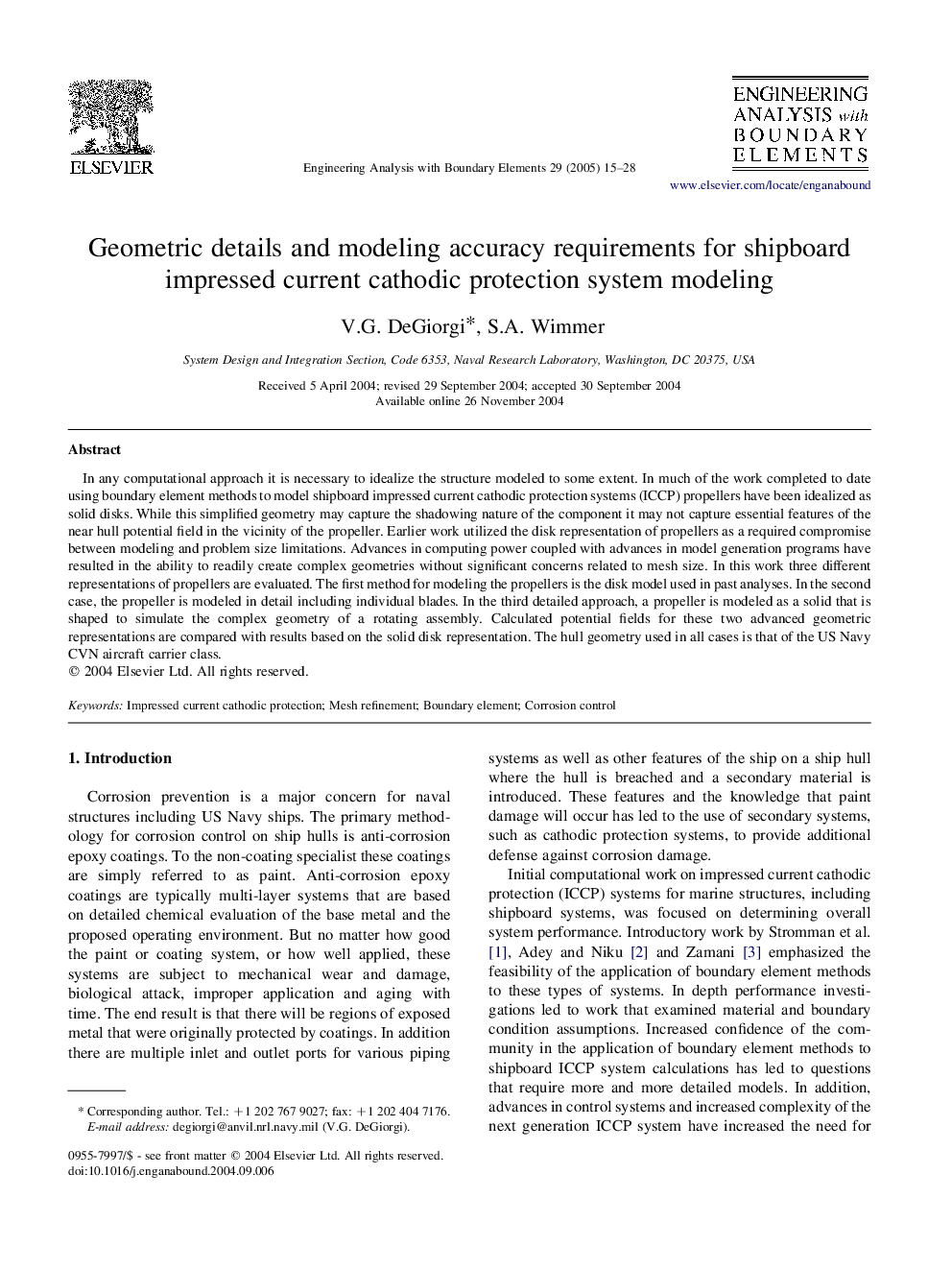| Article ID | Journal | Published Year | Pages | File Type |
|---|---|---|---|---|
| 10354182 | Engineering Analysis with Boundary Elements | 2005 | 14 Pages |
Abstract
In any computational approach it is necessary to idealize the structure modeled to some extent. In much of the work completed to date using boundary element methods to model shipboard impressed current cathodic protection systems (ICCP) propellers have been idealized as solid disks. While this simplified geometry may capture the shadowing nature of the component it may not capture essential features of the near hull potential field in the vicinity of the propeller. Earlier work utilized the disk representation of propellers as a required compromise between modeling and problem size limitations. Advances in computing power coupled with advances in model generation programs have resulted in the ability to readily create complex geometries without significant concerns related to mesh size. In this work three different representations of propellers are evaluated. The first method for modeling the propellers is the disk model used in past analyses. In the second case, the propeller is modeled in detail including individual blades. In the third detailed approach, a propeller is modeled as a solid that is shaped to simulate the complex geometry of a rotating assembly. Calculated potential fields for these two advanced geometric representations are compared with results based on the solid disk representation. The hull geometry used in all cases is that of the US Navy CVN aircraft carrier class.
Related Topics
Physical Sciences and Engineering
Computer Science
Computer Science Applications
Authors
V.G. DeGiorgi, S.A. Wimmer,
